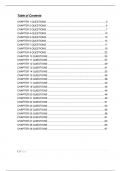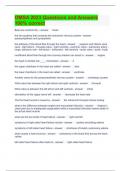Exam (elaborations)
TEST BANK WOMEN'S GYNECOLOGIC HEALTH 2ND EDITION
- Course
- Institution
TEST BANK WOMEN'S GYNECOLOGIC HEALTH 2ND EDITIONMULTIPLE-CHOICE QUESTIONS Select the one correct answer to each of the following questions. 1. Which of the following best defines the term “gender” as used in this text? a. A person’s sex b. A person’s sex as defined by society c. A societa...
[Show more]




